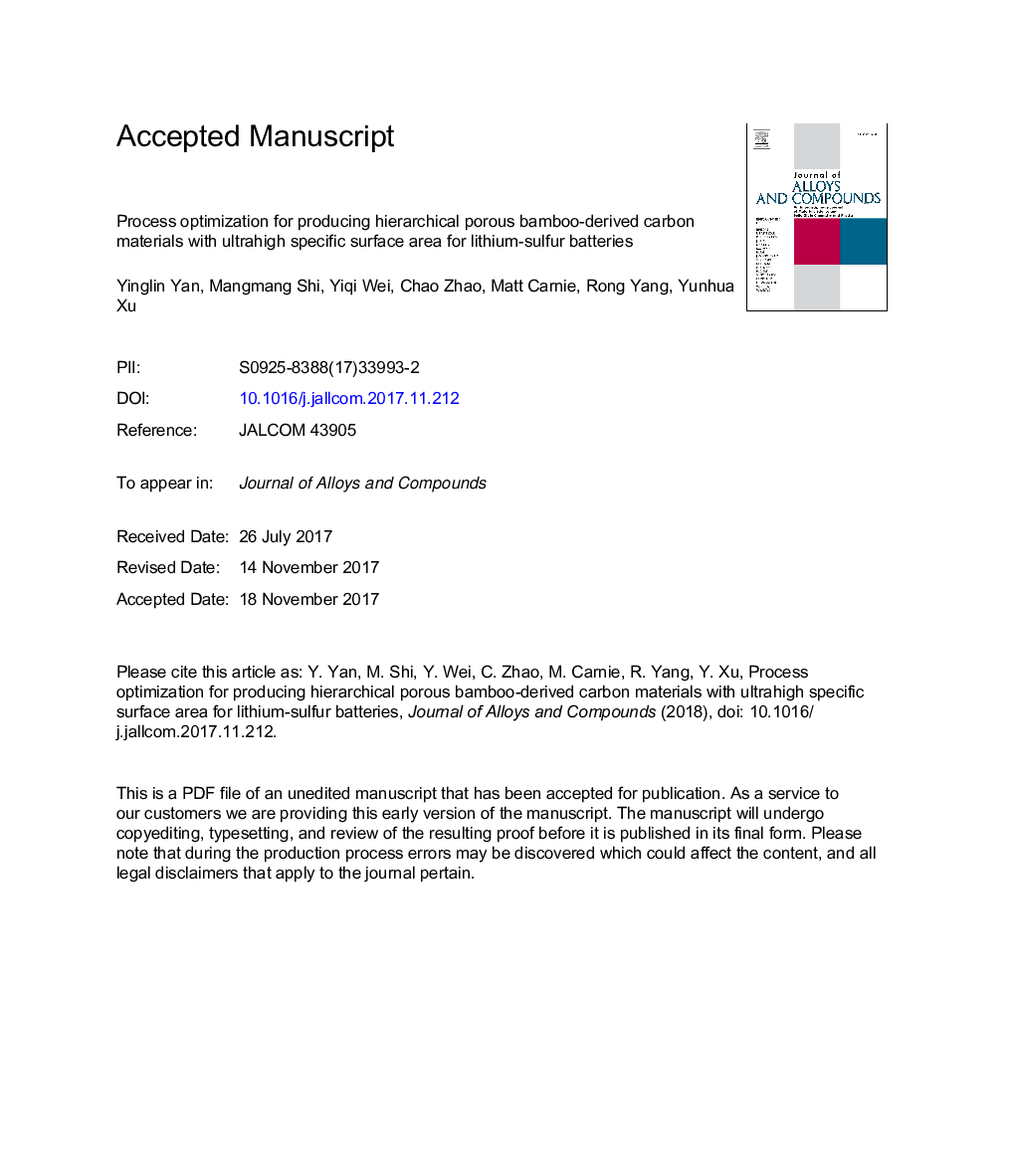| Article ID | Journal | Published Year | Pages | File Type |
|---|---|---|---|---|
| 7993930 | Journal of Alloys and Compounds | 2018 | 29 Pages |
Abstract
Bamboo derived porous carbon materials, as inexpensive and environmentally friendly, microporous material sources, have been attracting enthusiastic attention for energy storage applications. In this work three different processes were employed to prepare three types of bamboo derived porous carbon materials. Among them, the sample prepared via a one-step activation method delivered the largest total pore volume (1.146Â cm3Â gâ1) and the largest specific surface area (1824.4Â m2Â gâ1) owning to a hierarchical porous structure. After the sample was used to encapsulate sulfur (S) to prepare carbon/S composite as cathodes for Li-S batteries. The composite loaded with 58.5Â wt% S exhibited a high initial capacity of 1453Â mAh gâ1 at a rate of 0.1Â C (1Â CÂ =Â 1675Â mAÂ gâ1). A reversible capacity of 255Â mAh gâ1 was maintained after 500 cycles at 1Â C with a capacity decay rate of only 0.0016% per cycle. This suggests that the bamboo derived porous carbon could be a promising conductive carbon matrix for carbon/S composite cathodes in Li-S batteries.
Related Topics
Physical Sciences and Engineering
Materials Science
Metals and Alloys
Authors
Yinglin Yan, Mangmang Shi, Yiqi Wei, Chao Zhao, Matt Carnie, Rong Yang, Yunhua Xu,
